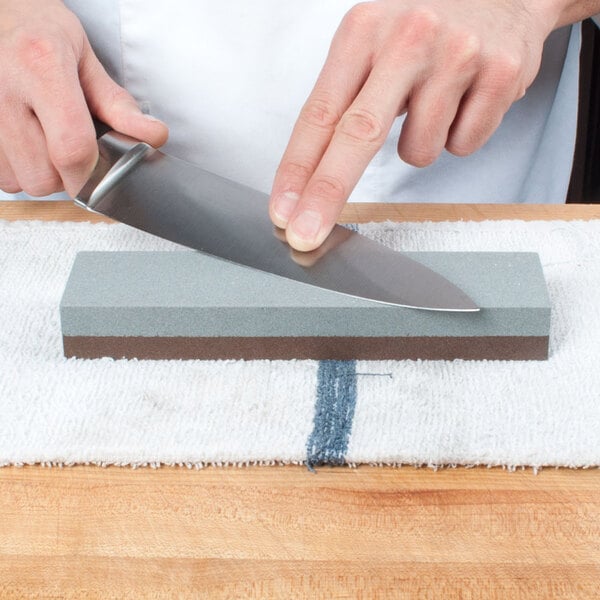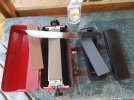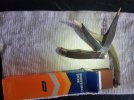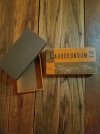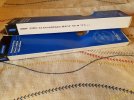Marketing people can label it a lot of things. But I have a SiC stone that I purchased from ACE Hardware, their Economy stone a 2X8" combination stone and it is at least 100 grit or 90 grit on the coarse side. The finer side is a medium grit 180-200. Other coarse crystolon
stones are labeled 120 grit (normally). But I know about this stone. Maybe you just read labels? What is your intended purpose for this coarse stone? DM
The short version is I've developed a really quite irrational interest for trying out different Norton synthetic oilstones; with a particular interest in getting a feel for how they may have changed over the years, even as they remained unchanged in name.
The slightly longer version of the story involves mentioning an old thread I came across -- I think on these very forums, where else?
Edit: https://www.bladeforums.com/threads/norton-india-stone-review-w-pics.881201/ -- wherein some well-experienced poster described how his older, decades-old in fact, India stones were harder and finer than the more recent ones in his ownership. If I recall correctly, some posts also bemoaned the further reduction in quality once Norton/Saint-Gobain moved production to Mexico. I seem to remember the poster spoke most highly of the Behr-Manning branded stones which had come out of Troy NY. decades prior. This got me curious about trying out both new and old stones and -- well, one thing led to another...
Through using a bunch of these stones for various grinding and sharpening tasks, it has indeed become apparent to me that they vary enough to justify preferring one particular stone over another, for some particular job; even if both stones are nominally supposed to be the same. For instance, I have a Crystolon combo from the 50s or 60s, the coarse side of which just absolutely refuses to shed grit with anything less than almost painful pressure -- very nice for staying nice and flat when grinding new bevels on beat-up old plane irons. But for grinding down large surfaces? I've found that the
much more recent Hecho en Mexico Crystolons release enough grit on the coarse side to cut fast on large areas like wide iron backs or zero-grinding large knives, and with comfortable pressures to boot. Funny part? The fine sides of both combos, made more than a half century apart, behave virtually indistinguishably.
In any case, the upshot is that I'm amassing something of a modest collection of Norton synthetic oilstones, in both aluminium oxide and silicon carbide, across the common grits (coarse, medium, fine) from different eras of production. But because I'm more interested in their properties as sharpening tools, and not so much as objects to collect, it isn't exactly fair to say that I only read labels or am particularly interested in the boxes or whatnot. However when I do see one of these stones which could be substantially different than the coarse/medium/fine Crystolons and Indias I already have -- perhaps because of an uncommon model number, or a rare grit size -- maybe I choose to buy it if it's priced attractively. Or not.
Another case in point: When discussing Norton's synthetic oilstones, people mainly only ever mention India stones and Crystolons as two separate things; so I didn't expect and was surprised, when I bought what I thought was a more common combination India, to stumble across IC-x model stones which are combinations of Crystolon medium and India fine; the ones I've come across are of that sort, at least. And those combination India-Cry stones may be the best Norton product I've tried so far; and would be a strong contender for my favorite pick if I could only have a single stone to get by with. Although this could be because I still haven't had the luck to try out any of the much less common synthetic/natural Norton combos featuring sides of Arkansas or Washita stones. Still, a slightly friable side of medium Crystolon paired with an India stone as hard and fine as the earliest Behr-Manning I've so far managed to get my hands on: that would be a damned nice stone regardless.
In the end, I'm curious about the E-8 in the OP because it could conceivably be another one of these rarely mentioned, but interesting to me nevertheless, pieces of quality vintage Behr-Norton abrasive -- which I find myself collecting for...
reasons.



